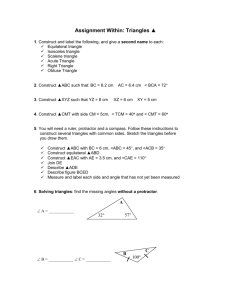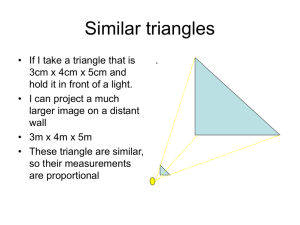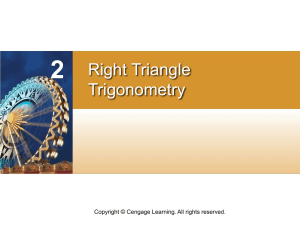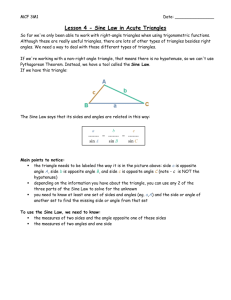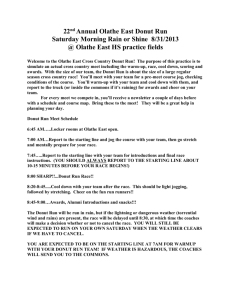Lab 5
advertisement
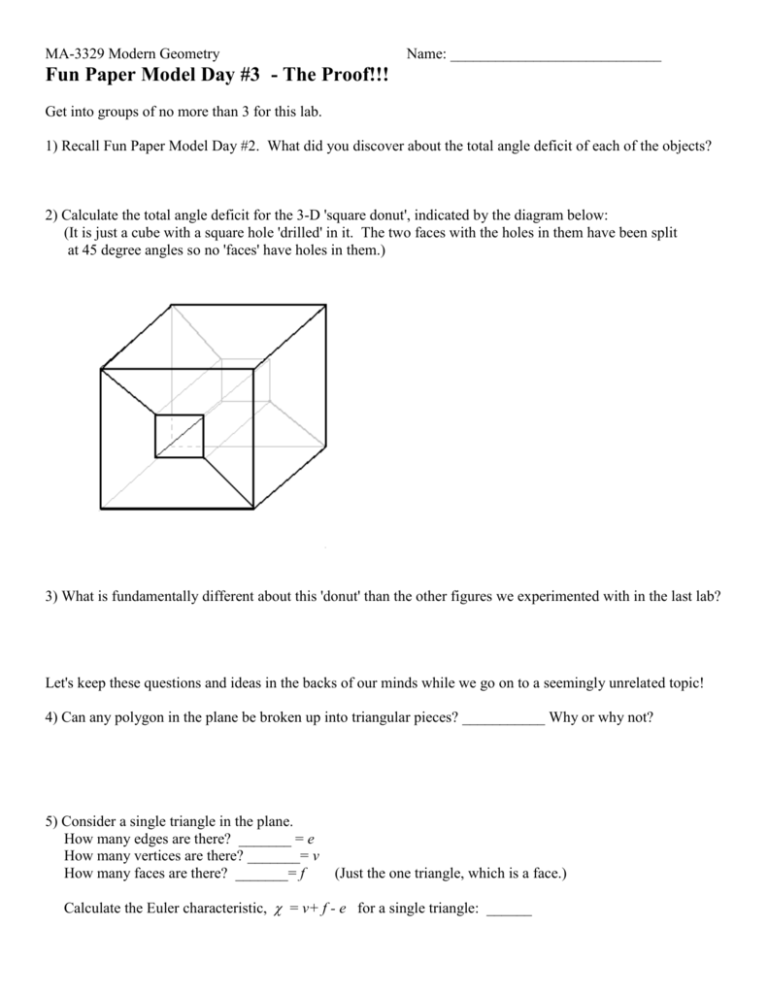
MA-3329 Modern Geometry Name: ____________________________ Fun Paper Model Day #3 - The Proof!!! Get into groups of no more than 3 for this lab. 1) Recall Fun Paper Model Day #2. What did you discover about the total angle deficit of each of the objects? 2) Calculate the total angle deficit for the 3-D 'square donut', indicated by the diagram below: (It is just a cube with a square hole 'drilled' in it. The two faces with the holes in them have been split at 45 degree angles so no 'faces' have holes in them.) 3) What is fundamentally different about this 'donut' than the other figures we experimented with in the last lab? Let's keep these questions and ideas in the backs of our minds while we go on to a seemingly unrelated topic! 4) Can any polygon in the plane be broken up into triangular pieces? ___________ Why or why not? 5) Consider a single triangle in the plane. How many edges are there? _______ = e How many vertices are there? _______= v How many faces are there? _______= f (Just the one triangle, which is a face.) Calculate the Euler characteristic, = v+ f - e for a single triangle: ______ 6) Draw some plane figures of your own, and find = v+ f - e for each one. 7) If you consider any plane figure made up of triangles, the only ways to add an additional triangle are by adding either one or two edges. Draw diagrams to help you explain these two procedures. a) b) 8) a) Does adding a triangle using the first method change = v+ f - e for the diagram? Justify. b) Does adding a triangle using the second method change = v+ f - e for the diagram? Justify. 9) Imagine taking a very stretchy net made entirely of triangles and stretching it around a beach-ball so that only one triangle is missing, at the bottom of the beach ball. The 'net' will allow the lengths of the line segments to shrink or grow, and the angles can change as they wish, but the line segments will remain straight. Would this action change = v+ f - e for your previously planar net?_____ Why or why not??? 10) Now imagine that you fill in the remaining triangle so your beach-ball is now entirely covered. You have just added one face to your net. What is = v+ f - e now? _______ What would = v+ f - e be for any triangular net covering a ball-like shape in 3D??? ____ 11) What would = v+ f - e be for a tetrahedron? ______ 12) What would = v+ f - e be for a cube, each of whose sides was split into two triangles? ______ 13) Consider the 'square donut' on page one of this lab. What is = v+ f - e for this object? (Careful!!!! Do it out step by step!!!) _________________ 14) Consider the angle deficit of a 3D object which is made up of n triangles having no 'holes' in it: What is = v+ f - e? __________ If there are n triangles, how many edges must there be? _____ = e How many faces are there? ______ = f Solve for v in terms of n: 15) How many (total) degrees are there in n triangles? ____________ 16) Explain why this formula is a valid way to calculate the angle deficit: Angle_Deficit = 360v - sum_of_angles_in_object's_faces 17) Write the formula in terms of only n and simplify! Convert to radians. 18) Does it change the Euler characteristic of an object if line segments are removed from planar segments to turn sets of 'co-planar' triangles into polygons? (ie, convert 2 triangles into a quadrilateral). What about if you were to remove the 45 degree cuts on the faces of the 'square donut' on page one? 19) What is the surface area of a sphere with a radius of one (unit sphere)?




